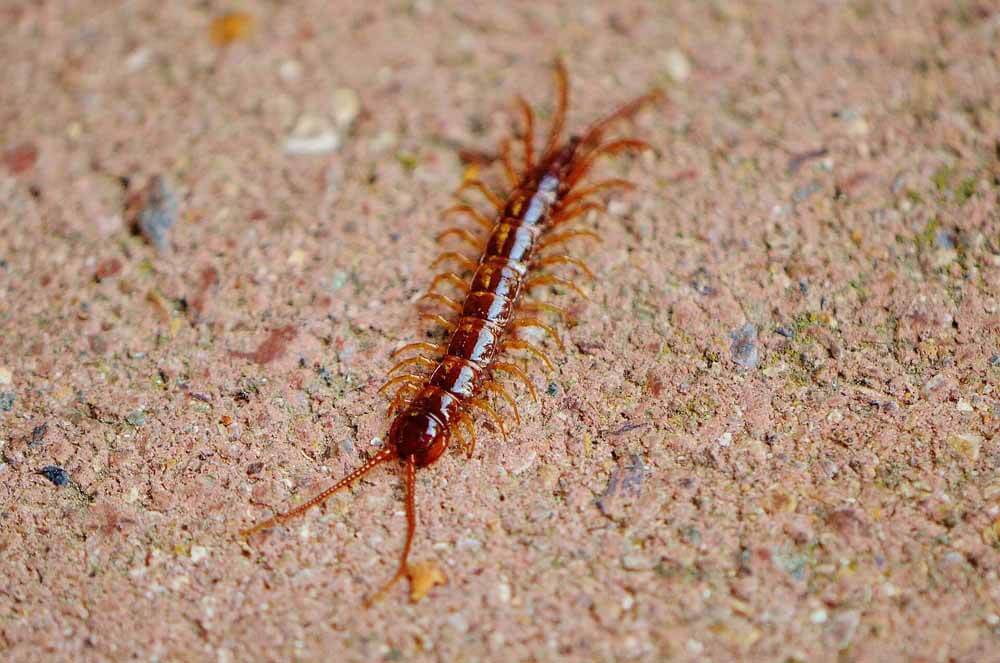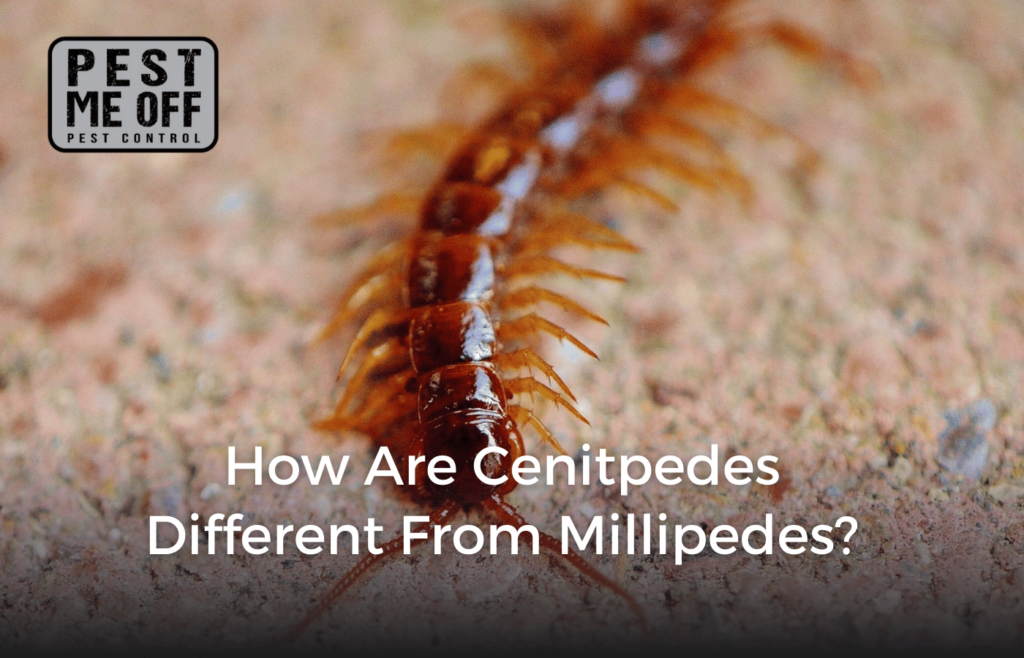Confusion is frequently caused by centipedes and millipedes’ long, segmented bodies and numerous legs. Despite their apparent similarity, they are members of distinct arthropod classes and have distinct functions in nature. It’s important to understand their unique characteristics especially if you see them in your house. Emphasizing their diets, movements, and interactions with their surroundings, this article offers a succinct and clear comparison of centipedes and millipedes differences. Understanding these differences will enable you to respond correctly should you find or notice a centipede infestation in your home.

Legs and Body Shape
One of the most obvious distinctions is the body structure. Because of their flexible, flattened bodies, centipedes can move swiftly through confined spaces. In contrast, the bodies of millipedes are more rigid and cylindrical.
Centipede Legs
Each segment of a centipede’s body has a single pair of legs. When they move, their legs spread out to the sides, making them appear more pronounced. The longest pairs of these legs are found near the back, though they vary in length.
Millipede Legs
Each segment of the millipede’s body has two pairs of legs. They move more slowly and steadily because their legs are shorter and tucked under their bodies.
Speed and Motion
Centipedes move quickly. As predators, they use speed to capture their prey. They frequently startle people with their quick, darting movements. Millipedes, on the other hand, move slowly and frequently in a wave-like manner. Their slower rate is consistent with their primary function as decomposers, consuming organic matter and decomposing plants.
Dietary Practices and Protection
Centipede Diet
Centipedes are carnivorous. They hunt spiders, insects, and other small animals. They have venomous claws on their front legs that paralyze their prey. Although they are uncommon, centipede bites may happen if they sense danger.
Millipede Diet
Herbivores or detritivores are what millipedes are. They eat plant matter, including dead leaves. The millipede doesn’t sting or bite. Rather, when disturbed, they release a defensive chemical to ward off predators.
Habitat and Behavior
Centipedes live alone and favor dark, moist areas like bathrooms and basements. In an attempt to find food or shelter, they are more likely to enter homes. Contacting a centipede control expert could help resolve the problem if several centipedes are frequently observed.
In contrast, moist areas such as garden beds or leaf litter are ideal for millipedes. Although they are less likely to enter houses, they might after a period of intense rain. When in danger, millipedes prefer to coil into a spiral, protecting themselves with their hard exoskeleton.
Lifespan and Reproduction
The young of centipedes resemble small adults, and the eggs are laid in soil or concealed places. Hundreds of millipede eggs can be laid at once, and each time they molt, their progeny grow more legs. Generally speaking, centipedes outlive millipedes by a few years.
Distinguishing Between Centipedes and Millipedes: Key Differences You Should Know
Despite having some characteristics in common, centipedes and millipedes differ in their body composition, diet, and gait. Centipedes are swift hunters, but millipedes are important for the breakdown of organic matter. You can respond to situations like a centipede infestation more skillfully if you are aware of these differences. Knowing these animals and how to react if you come across them in your home is beneficial.
With Pest Me Off Pest Control, your go-to partner for centipede and millipede removal, you can safeguard your house. Prevent infestations from getting worse. Call now to guarantee that your space remains pest-free and receive prompt, dependable service. Act now rather than later!

